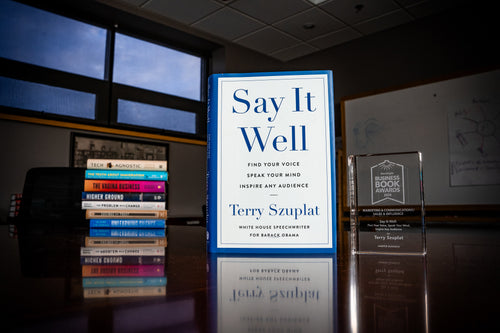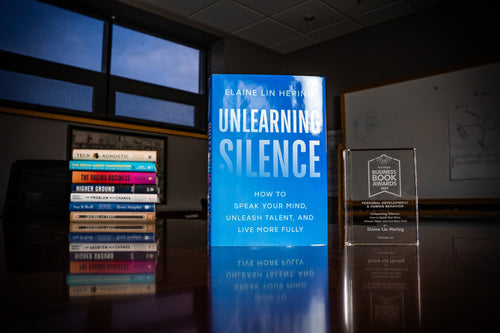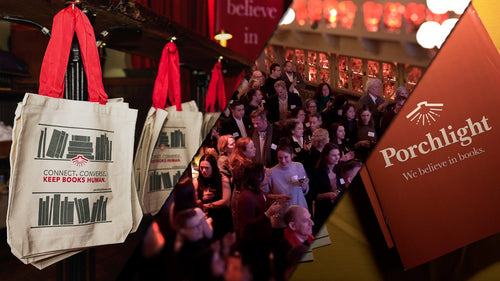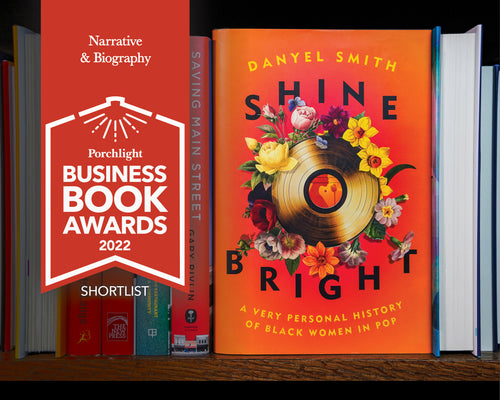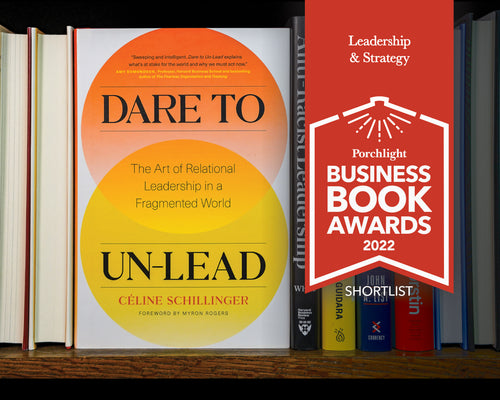
Eduardo Porter's new book The Price of Everything: Solving the Mystery of Why We Pay What We Do addresses cost and value from a variety of perspectives. Not only is it an interesting book to read as a general consumer, it also can give business owners insight into what makes people buy things, and the prices they're willing to consider.
We all make choices everyday.
Eduardo Porter's new book The Price of Everything: Solving the Mystery of Why We Pay What We Do addresses cost and value from a variety of perspectives. Not only is it an interesting book to read as a general consumer, it also can give business owners insight into what makes people buy things, and the prices they're willing to consider.
We all make choices everyday. Choices about what we want and need, and what we're willing to do (or pay) to acquire those things. As social and cultural as it is about business, this is truly the kind of book that applies to everyone. Below is a Q&A I did with the author to give you a taste of what the book is about.
Everybody likes a good deal. What does that really mean?
Eduardo Porter: Our standard understanding of this statement is that people want to get the most "value," for money. The meaning of this proposition is sometimes obvious. 10 sticks of chewing gum are clearly more valuable to a chewing gum lover than 5 sticks. But sometimes the answer is not quite that self-evident. Often we do not quite understand what we are paying for.
In The Price of Everything I report on an experiment that psychologists at the University of New Mexico did with lap dancers. They found that lap dancers commanded much bigger tips when they were at their most fertile. Dancers on the pill got lower tips. And all this happened under the radar. Their customers had no understanding of dancers' fertility, or whether they were using birth control or not. But something in their smell, or the way they grinded their hips enticed them to pay more.
On occasion we might also prefer to pay a higher price, in the belief that higher price goods are better. This is the case of wine. When people can see the price tag they will consistently report that higher-priced wines taste better. The correlation, however, tends to disappear in blind tastings. Even wine connoisseurs are stumped when they can't see the price. In one test many experts reported that $10 wine was about as good as a $500 bottle. And the preferences of lay people like me were all over the map, with cheap plonk often rating much higher than extremely expensive wines.
I wouldn't necessarily conclude that these examples amount to "bad deals," though. The patrons at the lap-dancing joint are probably enjoying more the lap dance by the fertile dancer, they are just not aware of this. And people who buy an expensive bottle of wine might also be getting out of it something more than a good drink. Buying expensive wine also provides a signal of the quality of the buyer. In other words, it's a good way to show off. And that can be valuable.
But there are times when we very clearly get bad deals. At the peak of the housing bubble in 2005 and 2006, many Americans that bought homes were buying a promise –a dream, perhaps, but heavily promoted by realtors—that house prices could only rise. Based on this expectation they took out enormous mortgages –of the interest-only variety with extra low teaser rates—stretching their finances to breaking point on the expectation that they would be able to sell or refinance at a higher price within a year or two. When houses stopped rising, the financial balance of these new homeowners unraveled entirely. That was a bad deal because they did not get what they thought they were getting.
How do changing prices reflect changing values?
EP: Values often shape the prices we are willing to pay. Tipping is prevalent across the United States. In Japan, it is unheard of. When I moved to Tokyo in the early 1990s, during my first few weeks there I often found myself pursued down the street by a waiter trying to return the tip I had left on the table after having lunch. That has to do with different notions of justice. In Japan salaries and fares are deemed to be sufficient remuneration for waiters and cab drivers. In the United States, by contrast, waiters earn less than the minimum wage. Not leaving them a tip is considered unjust. By tipping, we buy into a belief that we live in a just society.
But one of my core arguments is that changing prices change values. Consider promiscuity. In 1900 only about 6% of American women under the age of 19 experienced premarital sex. Today, the figure has risen to about 75%. You might argue that this was all driven in some fuzzy way by changing values. But one of the main reasons driving this change was the decline in the price of having sex. In 1900 premarital sex could be very costly, especially for a 19 year-old woman: she could easily get pregnant. Over the past 100 years, however, the invention of effective contraceptive techniques has dramatically reduced the cost of having sex outside of marriage. As we learn in economics 101, the demand curve slopes downward. As the price of premarital sex fell, demand rose.
There are many examples of this relationship between prices and cultural mores. Why do women have a much higher social status in the United States, say, than in rural India, where mothers still abort female fetuses? Essentially because in the United States the value of women rose immensely as women entered the workforce. By entering the labor market, women transcended their sole role as wombs and child-minders, and acquired value outside the home. This changed the balance of power dramatically.
Why is slavery, once prevalent around the world, today mostly illegal? Because it became cheaper for employers to pay a wage than to enslave workers. That happened mostly because rising population densities reduced the price of work. Studies of societies through history suggest slavery was most common in economies that supported 40 people per square mile, because there were few available workers to work the fields. It was cheaper to feed, clothe and guard slaves than to pay them a wage. But slavery and other forms of coercion declined as agricultural productivity rose to appoint where the land could support about 100 workers per square mile, because the increased competition for jobs made wages fall.
Why do people spend money on things they don't need?
EP: "Need" is a difficult concept to pin down. People spend money on things they think they want. And those things might or might not be what they need. Still, that is not necessarily undesirable. Clearly, some of our psychological quirks produce self-destructive "wants." We lack self-control, and we have trouble evaluating costs and benefits in the future. This leads us to try to gratify immediate urges and wants at the expense of potentially large future costs. Do I "need" an order of fries with my hamburger? Chances are I don't. Increasing obesity rates in the United States and around the world suggest we have a substantial "unnecessary fries problem." In some places governments are considering addressing this kind of problem like they addressed smoking –imposing taxes to raise the present price of our immediate urges to protect us from what we want.
But while there are some instances in which our wants are clearly steering us the wrong way, I would argue that it is difficult to determine whether we need what we want or not. Who will make this determination? The philosopher Peter Singer suggested that we should all be willing to give away everything we have in excess of what we need to guarantee an adequate standard of living: "If we can prevent something bad without sacrificing anything of comparable significance, we ought to do it; absolute poverty is bad; there is some poverty we can prevent without sacrificing anything of comparable moral significance; therefore we ought to prevent some absolute poverty." I find this argument convincing, yet I do not live by it. Very few people do. We believe that we need what we want.
How much does Free cost?
EP: In The Price of Everything I argue that "free" doesn't exist. There are some things that just look as if they were free. Free broadcast television costs us not in money but in time: 18 minutes worth of looking at commercials for every 42 minutes worth of show. In 2009 advertisers reportedly paid about $230,000 for a 30-second spot on ABC's "Desperate Housewives." At that rate, each of the 10.6 million households watching Desperate Housewives were worth about 79 cents to the network. Viewers paid more than that. At the average wage of $23 an hour, the average viewer was paying almost $7, except that she was paying in time, rather than money.
When we treat things as if they were free, they tend not to last, because there is no price mechanism to adjust our demand to supply. Hunters in the 19th century treated the buffalo as if it were free and in a span of a few years reduced a population of hundreds of thousands of buffalo to a couple of hundred. Newspapers today have more readers than ever. But if they do not figure out a way to charge their readers for what they read they will go out of business. Employment in the newspaper business has dropped 42% over the last 10 years, to about 250,000 jobs. But without reporters and editors, the news will not be made. The "free news" that we can find throughout the Internet –which depend on newspapers to provide most of the original information will disappear with them.
---






